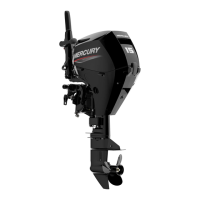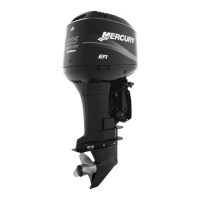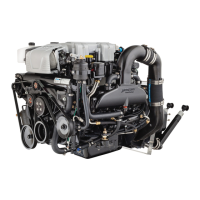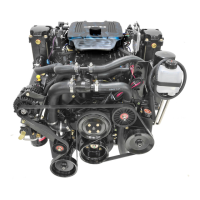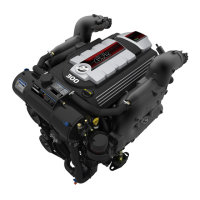!
WARNING
Continuous exposure to airborne particles such as chemical vapors, dust, or spray can cause serious injury or death. Ensure
that the work area is properly ventilated and wear protective eyewear, clothing, and respirators.
1. Wash and degrease the cowl with a water‑based cleaning solution. Simple Green® Aircraft & Precision Cleaner or Stewart
Systems EkoClean are suggested at a 10:1 mix ratio with clean water. Rinse with clean water.
2.
Use an orbital dual‑action (DA) sander at low speed with an 80–100 grit disc to sand around any damaged areas. Low
speed is used to prevent melting of the cowl substrate and causing adhesion issues. Wipe with the same cleaner used to
wash the cowl, followed by a clean water wipe. Blow dry with compressed air.
3. Apply two light coats of Klean‑Strip® Bulldog® Adhesion Promoter to areas that were sanded to the base cowl material.
Omni™ MP178 Plastic Primer or equivalent is a suitable alternative.
4. Repair dings and scratches with Evercoat Poly‑Flex™ following manufacturer instructions. An equivalent filler designed for
flexible automotive components may be substituted. Sand to contour with a 180 grit disc, using an orbital DA sander, and
finish with a 320 grit disc to feather into the surrounding paint. If the entire cowl is to be refinished, scuff all surfaces with
either 320 grit or a maroon Scotch‑Brite™ pad, feathering in all minor chips and scratches.
5. Wipe down the cowl with the same cleaner used to wash and degrease the cowl, followed by a water wipe. Blow dry with
clean compressed air.
6. Prime all areas to be painted with Omni™ MP281 or MP282, mixing and using per manufacturer instructions. For top
quality cowl work, complete refinishing is suggested in place of spot repairs. If the topcoat color is white, PPG Omni™
MP170 gray epoxy should be applied as a second (intermediate) primer for color match and scratch hiding on cowls.
7. Lightly sand the primer with 320 grit using an orbital DA sander or by hand to a uniform surface. Wipe down and blow dry
as in previous steps. If there are no imperfections, a maroon Scotch‑Brite™ pad may be used instead.
8. Base coat with either Omni™ MBC9300 (Phantom Black), Delfleet® 938661 (Warm Fusion White), Delfleet® 938662 (Cold
Fusion White), PPG DU34334 (Mariner Silver), PPG DU35466 (Force Charcoal) using the manufacturer's mixing and use
guideline.
9. Topcoat with PPG Omni™ MC161 clear or equivalent, using the manufacturer's mixing and use guidelines. Use two full
wet coats of a high quality clear coat for long term durability.
10. If a top quality finish is required, or if errors in the clear coat need to be corrected, cut and buff the clear coat using a
reputable automotive‑type system, appropriate for the clear coat material.
11. Follow paint manufacturer's guidelines for cure times before machine finishing, waxing, or applying decals.
Emissions
Exhaust Emission Standards
Through the Environmental Protection Agency (EPA), the federal government has established exhaust emissions standards for
all new marine engines sold in the U.S.
What Are Emissions?
Emissions are what comes out of the exhaust system in the exhaust gas when the engine is running. They are formed as a
result of the process of combustion or incomplete combustion. To understand exhaust gas emissions, remember that both air
and fuel are made of several elements. Air contains oxygen and nitrogen among other elements; gasoline contains mainly
hydrogen and carbon. These four elements combine chemically during combustion. If combustion were complete, the mixture
of air and gasoline would result in these emissions: water, carbon dioxide and nitrogen, which are not harmful to the
environment. But combustion is not usually complete. Also, potentially harmful gases can be formed during and after
combustion.
All marine engines must reduce the emission of certain pollutants, or potentially harmful gases, in the exhaust to conform with
levels legislated by the EPA. Emissions standards become more stringent each year. Standards are set primarily with regard to
three emissions: hydrocarbons (HC), carbon monoxide (CO), and oxides of nitrogen (NOx).
Hydrocarbons – HC
Gasoline is a hydrocarbon fuel. The two elements of hydrogen and carbon are burned during combustion in combination with
oxygen. But they are not totally consumed. Some pass through the combustion chamber and exit the exhaust system as
unburned gases known as hydrocarbons.
Carbon Monoxide – CO
Carbon is one of the elements that make up the fuel burned in the engine along with oxygen during the combustion process. If
the carbon in the gasoline could combine with enough oxygen (one carbon atom with two oxygen atoms), it would come out of
the engine in the form of carbon dioxide (CO
2
). CO
2
is a harmless gas. But carbon often combines with insufficient oxygen
(one carbon atom with one oxygen atom). This forms carbon monoxide, CO. Carbon monoxide is the product of incomplete
combustion and is a dangerous, potentially lethal gas.
General Information
Page 1C-14 © 2018 Mercury Marine 90-8M0125265 eng NOVEMBER 2017
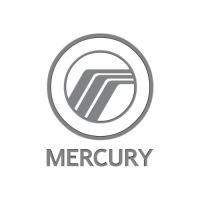
